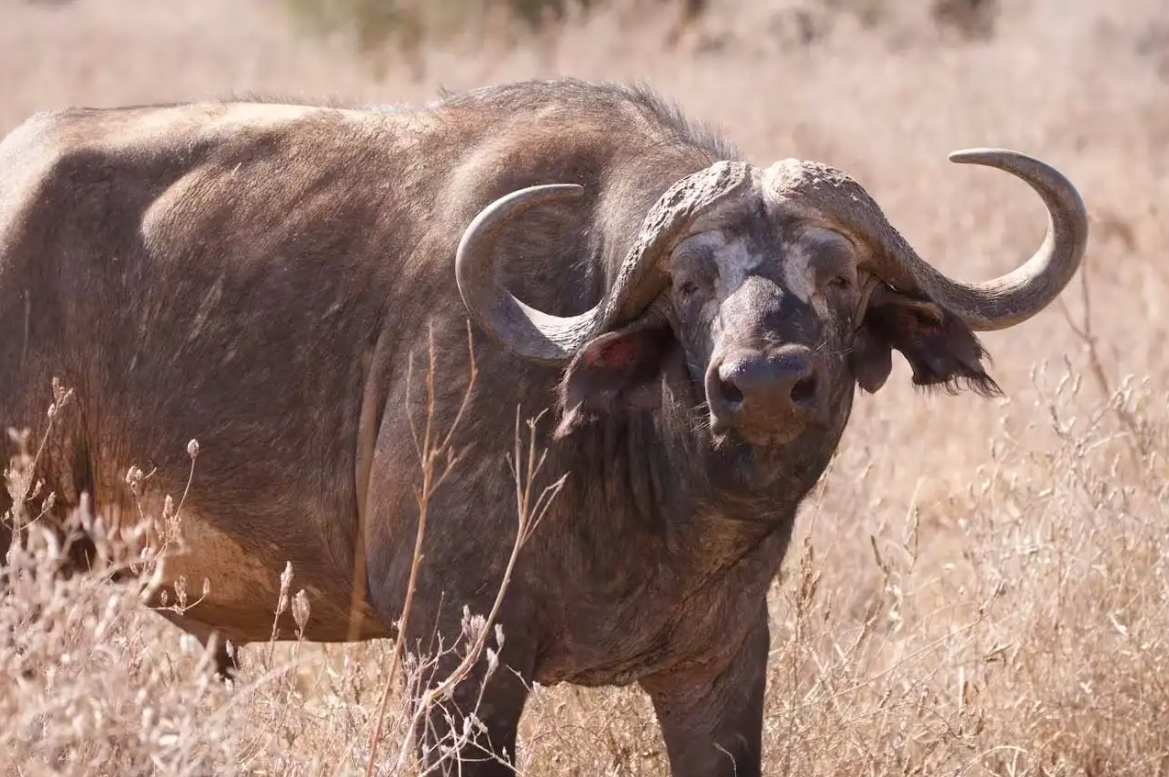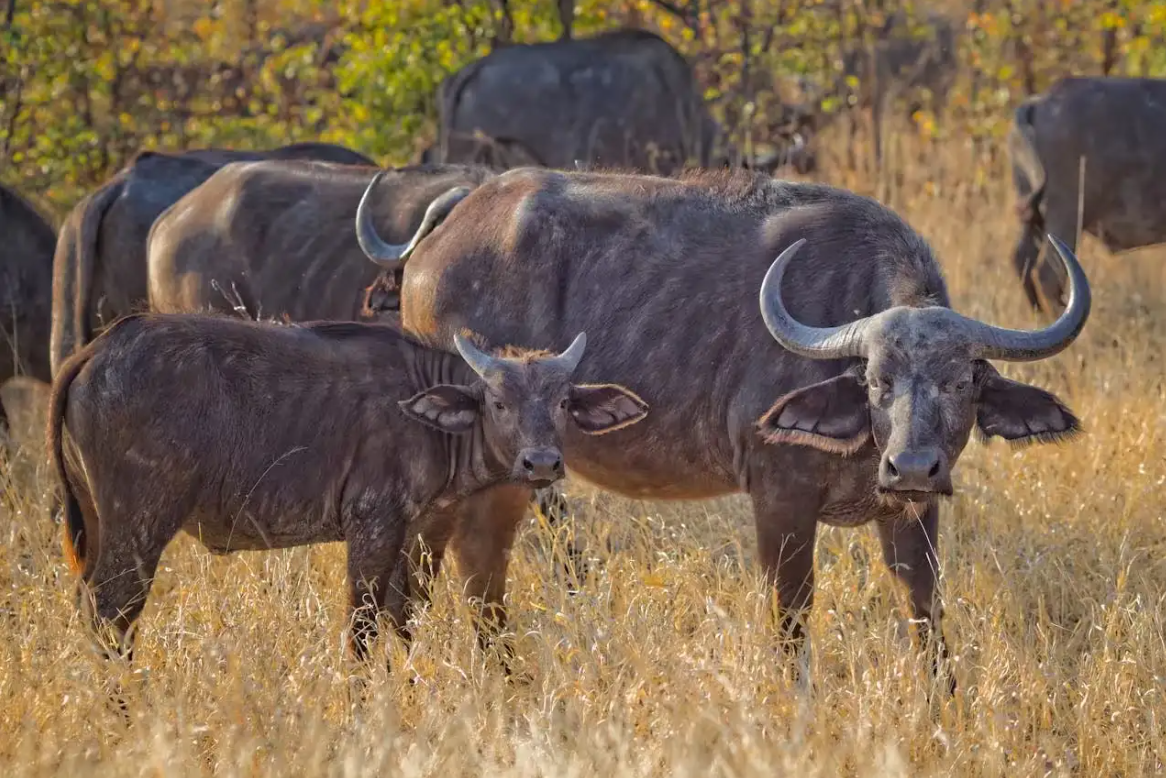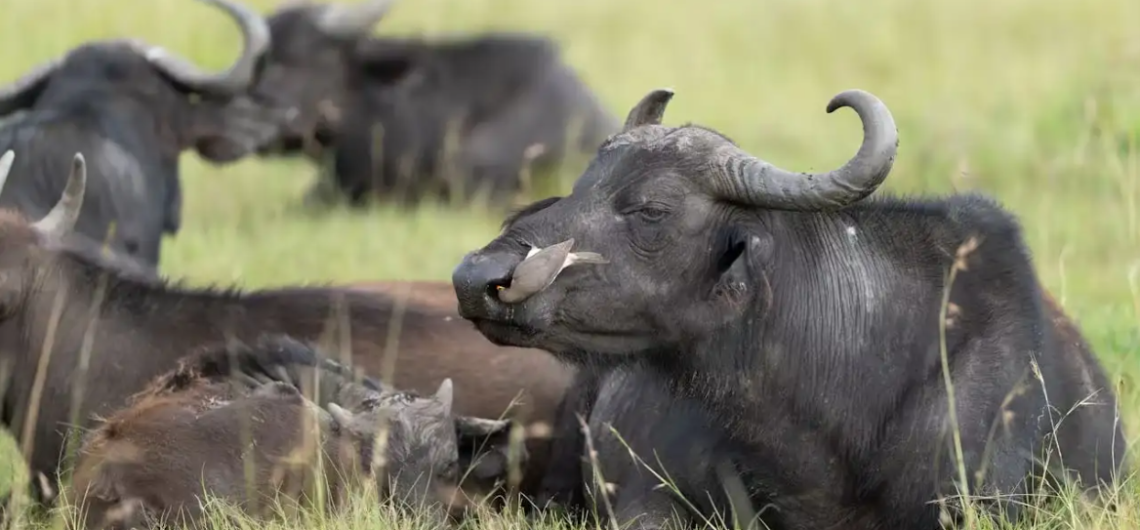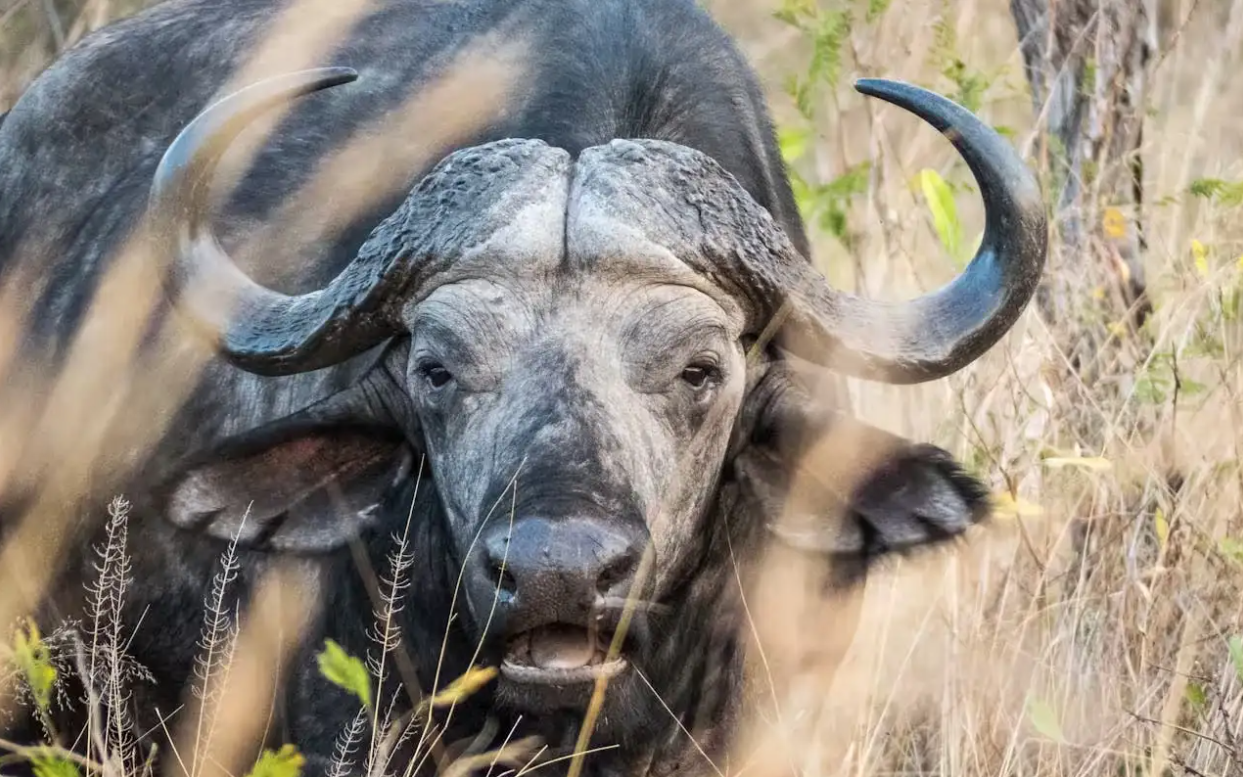Reading Time: 5minutes
The African buffalo (syncerus caffer)is one of the big five animals in Africa. Learn about its habitat, size, behaviour, diet, and where to find them in Kenya.
The African Buffalo
The African Buffalo is one of the sub-Saharan African bovines. It is found across the African savanna and is mostly spotted grazing during the African safari tours, especially in some of the premier national parks in Kenya, from the famous Maasai Mara National Reserve to the little-known Meru National Park. The African buffalo, scientifically known as syncerus caffer, is closely related to the domesticated cow. The African buffalo is also related to other buffalo species like the Asian water buffalo, American bison, and domestic cattle. The African Buffalo has never been domesticated, unlike its other species, such as the wild yak and wild water buffalo. Its main predators are the lions, the spotted hyena, the Nile crocodile, and the African wild dog. The African Buffalo is most threatened by hunters hunting them for their skin and the shield-like horns. It is one of the big five animals in Africa, together with the African lion, the African Bush Elephant, the rhino, and the African leopard.
The size of the African Buffalo
The African Buffalo is the largest among the bovines. It is approximately 1.0 to 1.3 m (3.3 to 5.6 ft) from the shoulder. The tail is 70 cm to 110 cm (28 to 43 in) long. The cape buffalo can weigh between 425 and 870 kgs( 937 and 1,918 lb). On the other hand, the African Forest Buffalo is smaller in size, measuring between 250 and 450 kgs, which is (600 to 1000 lb). The front part of the African Buffalo is heavier than the back, and for that reason, the front hooves are wider than the rear. The male African Buffalo has white circles around the eyes, and its coat changes with age from black to dark brown. The females are reddish brown, their horns are curved upward and back, and they have hair around their ears; they are more hairy than the males.
Their horns, especially in the male, come close at the base to form a shield known as the “Boss”. The horn can grow up to 164 cm or 64.5 inches. It takes 5 to 6 years for the horns to grow, but the Boss form when they are 8 to 9 years old. The female African buffalo is known as the cow and does not have a boss.
Buffalo species
There are five species of buffalo
The Cape Buffalo( syncerus caffer caffer): this species is found in southern and Eastern Africa.
The Forest Buffalo ( S.C. nanus): this is the smallest among the buffalo species and is found in western and central Africa.
The Sudan Buffalo (S.c. brachyceros ): This species is found in the drier northern parts of central and East Africa.
The mountain Buffalo (S.c. mathewsi). This species is found in the Vurunga Mountains in Central Africa.
The Nile Buffalo (S.c. aequinoctialis): This species is identical to the Sudan buffalo, and it is found in the drier northern regions of East and Central Africa.

The Social Behaviour of the African Buffalo
The African Buffalo is a highly social animal living in herds of variable sizes. The herd is made up of several females, calves and surrounded by a group of high-ranking males and females.
The African buffaloes have a unique behaviour, where the female stand up, shake their bodies and sleep facing the direction they should move after resting. After shuffling for some time, which is mostly around an hour or more, females shuffle and go back to rest. They travel in the direction they have decided; this is a communal behaviour, and it does not depend on age or hierarchy.
The African Buffalo will come together when attacked by predators to make it hard for predators to pick one of them. The calves are always secured in the middle of the herd, and they always respond to the distress call of one of their member. A distress call from the mother not only attracts the attention of the mother but also gets the attention of the whole herd.
Since the African Buffalo is safe when in the herd, the dominant males can tolerate competition for mating from the subordinate bulls within the herd. The males can sometimes engage in shows and displays of dominance, which can sometimes turn into actual fights.
The male African Buffalo face each other lowing with horns down, they wait for the other bull to do the same, they lock and twist their horns from side to side, a behaviour done by males and calves, but the females rarely spar.
African Buffalo bulls separate from the herd during the dry season to form bachelor groups, and they live in two groups: one made up of those aged four to seven years, and the other made up of those aged 12 years and above. The older males that are no longer able to compete for mates may choose to live in solitude, and they are referred to as the “Dagger boys, “ and they are the most dangerous to humans.
African Buffalo Herd resting.avif
African Buffalo sounds
They produce low-pitched sounds of about two to four seconds, and at an interval of three seconds to signal other members that it is time to move. When signalling a move to the water hole, they produce a maa sound about 20 times in a minute, and when aggressive, they produce grunts that can turn into rumble growls. When looking for calves, they make croaking sounds and the calves produce similar calls when in distress. The dominant male African Buffalo makes calls to announce their arrival and to alert the herd of a potential threat from the predator.
Reproduction of African Buffalo
The African Buffalo have a varying sexual maturity between males and females. The females mature at around 5 years, while the males mature at 4 to 6 years. The African Buffalo mates and gives birth during the rainy season; the males watch the female on heat and have a gestation period which takes about 11.5 months. The bonding between the mother and the calf is longer than in other bovids, ending when another calf is born. The African Buffalo have an average lifespan of 11 years in the wild.

Where to see African Buffalo
The African Buffalo is widely spread in Kenya and is frequently spotted either resting under tree shades or grazing during Dancom tours.
-
Maasai Mara National Park
-
Lake Nakuru National Park
-
Nairobi National Park
-
Samburu National Park
-
Tsavo National Park
-
Meru National Park
-
Aberdare National Park
-
Mount Kenya National Park
Conclusion
The African buffalo (syncerus caffer) is one of the most sought-after animals during the Dancom tour safari tours. They live in herds of a few individuals to herds of thousands of buffalo. It is admired for its size, strength, and its social behaviour. It is one of the Big Five animals in Africa, and it can be viewed in various National parks in Kenya, such as the Maasai Mara National Park and Samburu National Park. visit our tailored safari tours to get some of the best kenyan wild experience



Comments